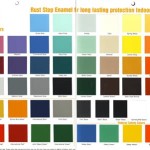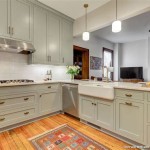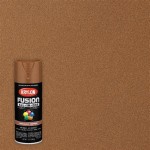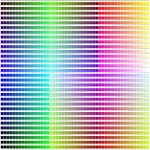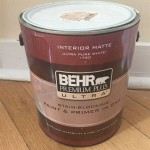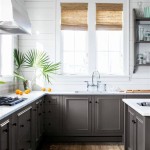How To Choose The Right Paint Color Samples For Kitchen Walls
Selecting the ideal paint color for kitchen walls can significantly impact the aesthetic appeal and overall ambiance of the space. The kitchen, often considered the heart of the home, merits careful consideration when it comes to color selection. The process involves more than simply picking a color that is visually appealing; it requires understanding how different colors interact with light, the existing elements within the kitchen, and the desired mood one wishes to create. Employing paint color samples is a crucial step in this endeavor, allowing for a more informed and ultimately satisfying decision.
Navigating the myriad of paint colors available can be overwhelming. The first step involves narrowing down the choices based on personal preferences and the existing design scheme of the kitchen. Factors such as cabinet color, countertop material, flooring, and appliances all play a role in determining which hues will complement the overall design. Once a selection of potential colors has been identified, obtaining paint samples is essential for visualizing how these colors will appear within the specific context of the kitchen.
Paint samples allow for a real-world assessment of how the color will interact with the kitchen's unique lighting conditions. Natural light, artificial light, and the interplay between the two can dramatically alter the perceived color of a paint. Furthermore, the surrounding surfaces can reflect light and influence the way a color appears. Therefore, relying solely on paint swatches or online representations is insufficient for making an informed decision. Actual paint samples, applied to the walls in the kitchen, provide a far more accurate representation of the final result.
Understanding the Importance of Lighting Conditions
Lighting is a critical factor in how paint colors are perceived. Kitchens typically experience a combination of natural and artificial light sources, each of which can affect color appearance differently. Natural light, especially sunlight, can intensify warm tones and wash out cooler tones. Conversely, artificial light, such as incandescent or fluorescent lighting, can cast different hues depending on the bulb type. Incandescent lighting tends to emit a warm, yellowish glow, while fluorescent lighting can emit a cooler, bluish tone.
To accurately assess how a paint color will look under different lighting conditions, it is advisable to apply the paint sample to multiple areas of the kitchen wall. These areas should ideally receive varying amounts of natural and artificial light. For instance, one sample could be placed near a window, another in a shaded area, and another near a frequently used light fixture. Observing the color at different times of the day will further reveal how it responds to changing light conditions.
Consider the color temperature of the light bulbs used in the kitchen. Warmer light bulbs (around 2700K) will enhance warm paint colors like yellows, oranges, and reds, making them appear more vibrant. Cooler light bulbs (around 5000K) will accentuate cool paint colors like blues, greens, and purples, making them appear more crisp and clean. Neutral light bulbs (around 3500K) provide a more balanced illumination that renders colors more accurately. Choosing light bulbs with the appropriate color temperature can help ensure that the chosen paint color appears as intended.
Furthermore, consider the positioning of light fixtures in relation to the painted walls. Direct light shining on a wall will emphasize its texture and any imperfections. Indirect light, on the other hand, will create a softer, more diffused appearance. Experimenting with different lighting arrangements can help determine the best way to showcase the chosen paint color and minimize any unwanted effects.
Considering Existing Kitchen Elements and Their Influence
The existing elements within the kitchen, such as cabinets, countertops, flooring, and appliances, play a significant role in determining the most suitable paint colors for the walls. These elements represent a fixed portion of the overall design scheme, and the wall color should complement and enhance their aesthetic appeal. Ignoring these existing elements can lead to a disjointed and unbalanced visual effect.
The color of the kitchen cabinets is a primary consideration. If the cabinets are a neutral color, such as white, gray, or beige, a wider range of wall colors can be used. However, if the cabinets are a more pronounced color, such as dark wood or a vibrant hue, the wall color should be chosen to either complement or contrast with the cabinet color in a harmonious way. For example, warm wood cabinets might pair well with a warm-toned paint like an off-white with yellow undertones, while cool-toned cabinets like gray might pair well with a cool-toned paint like a light blue or green.
Countertops also influence the choice of wall color. If the countertops are a solid color, the wall color can be chosen to create a cohesive look. If the countertops are patterned, the wall color should be chosen to either pick up a subtle color from the pattern or to provide a neutral backdrop that allows the countertop to stand out. For instance, granite countertops with various colors and patterns might benefit from a neutral wall color that doesn't compete for attention.
Flooring is another important element to consider. The color and material of the flooring can affect the overall warmth or coolness of the kitchen. Warm-toned flooring, such as hardwood or tile with earthy tones, might pair well with warm-toned wall colors. Cool-toned flooring, such as gray tile or concrete, might pair well with cool-toned wall colors. The goal is to create a sense of balance and harmony between the flooring and the walls.
Applying and Evaluating Paint Color Samples Effectively
The application of paint color samples is a crucial step in the color selection process. Simply holding a paint swatch against the wall is not sufficient for accurately visualizing the final result. Instead, the paint samples should be applied directly to the wall in a substantial area, ideally at least 12 inches by 12 inches. This will allow for a more realistic assessment of the color's appearance under different lighting conditions and in relation to the existing kitchen elements.
Before applying the paint samples, it is important to properly prepare the wall surface. The area should be clean, dry, and free of any loose paint or debris. If the existing wall color is dark or vibrant, it may be necessary to apply a primer to ensure that the paint sample accurately reflects the chosen color. Use painter's tape to create clean, defined edges around the sample areas, preventing any bleeding or overlap.
Apply at least two coats of the paint sample, allowing each coat to dry completely before applying the next. This will ensure that the color is fully saturated and that the true hue is revealed. Once the paint samples are dry, observe them at different times of the day and under different lighting conditions. Take note of how the color changes and how it interacts with the surrounding elements in the kitchen.
Live with the paint samples for a few days, observing them under different conditions and at different times of day. This extended period of evaluation helps to ensure that the chosen color is truly the right fit for the kitchen. It also allows for a more objective assessment of the color's aesthetic appeal and its ability to create the desired mood. During this period, solicit feedback from other residents of the household to gain different perspectives and insights.
Once a decision has been made, carefully remove the painter's tape and prime the areas where the paint samples were applied. This will ensure a uniform and consistent finish when the final coat of paint is applied to the entire wall. Following these steps will contribute to a successful and visually pleasing kitchen makeover.
Ultimately, choosing the right paint color for kitchen walls is a process that requires careful consideration of lighting conditions, existing kitchen elements, and the effective application and evaluation of paint color samples. By taking the time to conduct thorough research and experimentation, a color can be selected that enhances the aesthetic appeal and creates the desired ambiance for this vital space.

An Expert Guide To Choosing Paint Colours For A House Interior

Dulux Kitchen Paint Colours

Dulux Kitchen Paint Colours

52 Best Kitchen Paint Color Ideas And Combinations For 2025

26 Kitchen Color Ideas Inspiration To Elevate Your Benjamin Moore

How To Choose Paint Colors Tips Follow And Mistakes Avoid This Old House

10 Kitchen Wall Colors To Elevate Your Culinary Space

25 Popular Kitchen Paint Colors With White Cabinets For 2025

26 Kitchen Color Ideas Inspiration To Elevate Your Benjamin Moore

52 Best Kitchen Paint Color Ideas And Combinations For 2025
Related Posts


